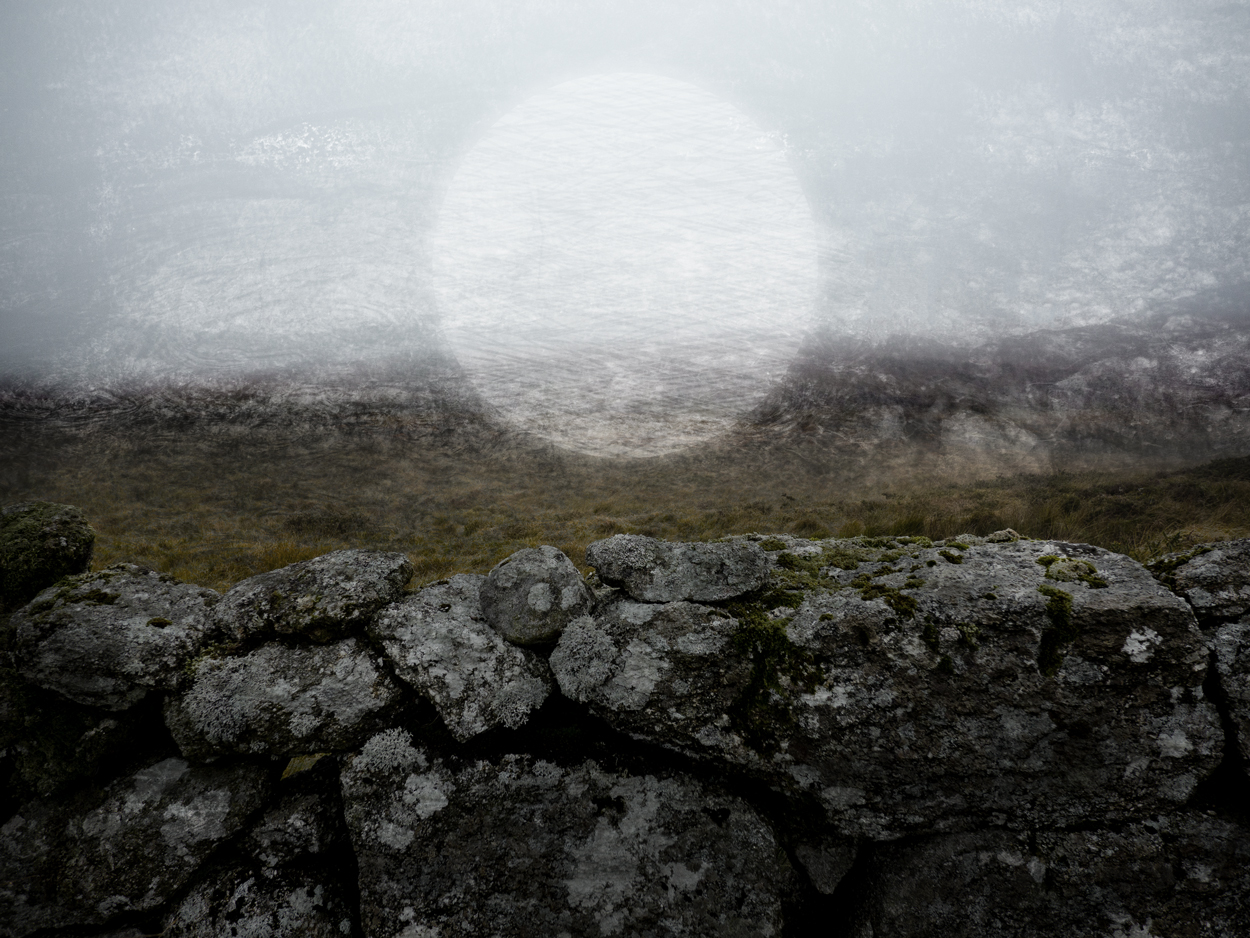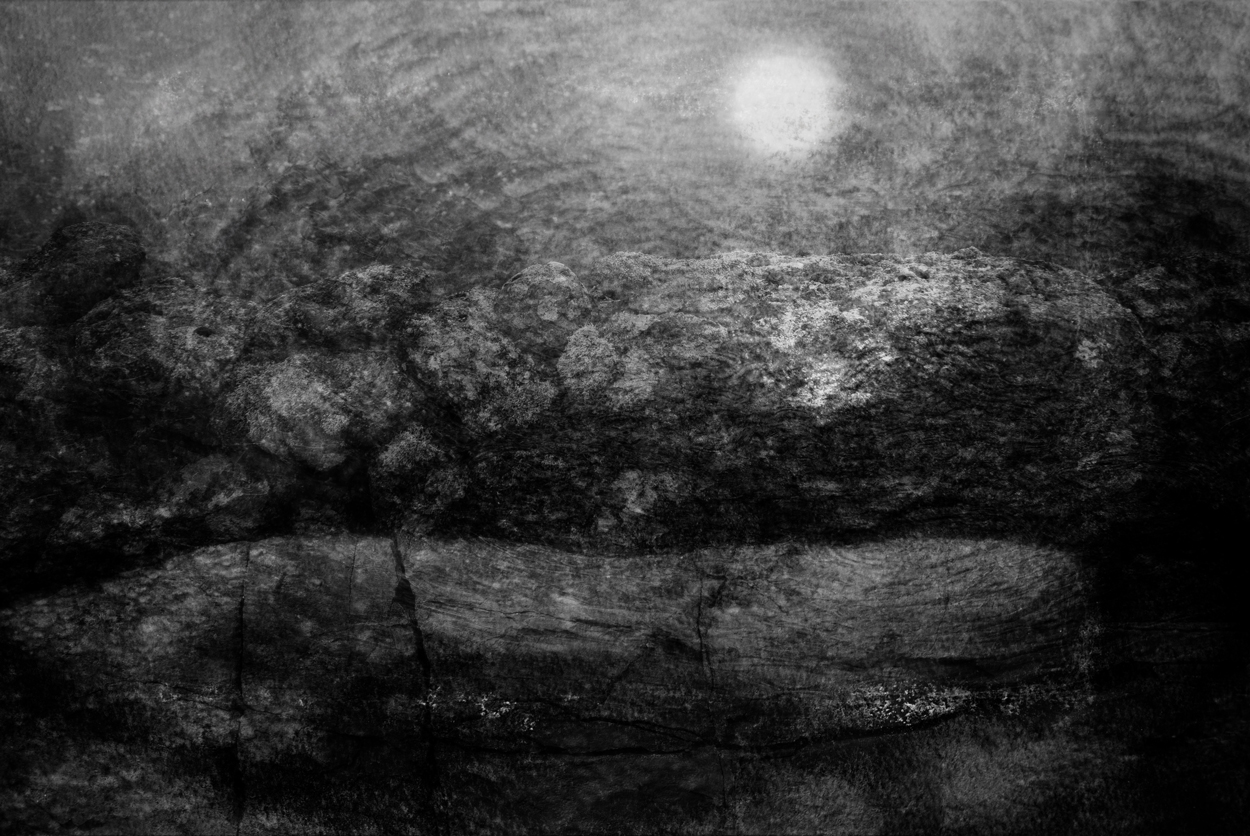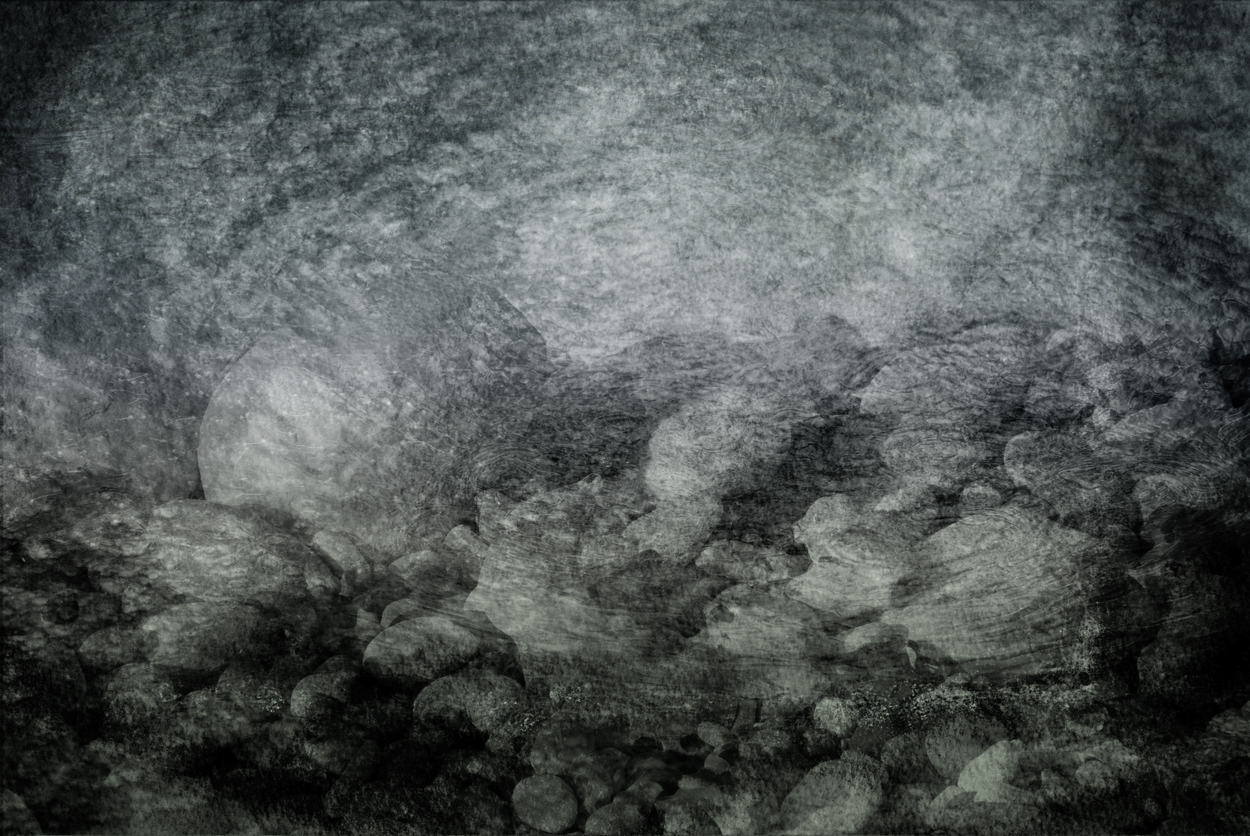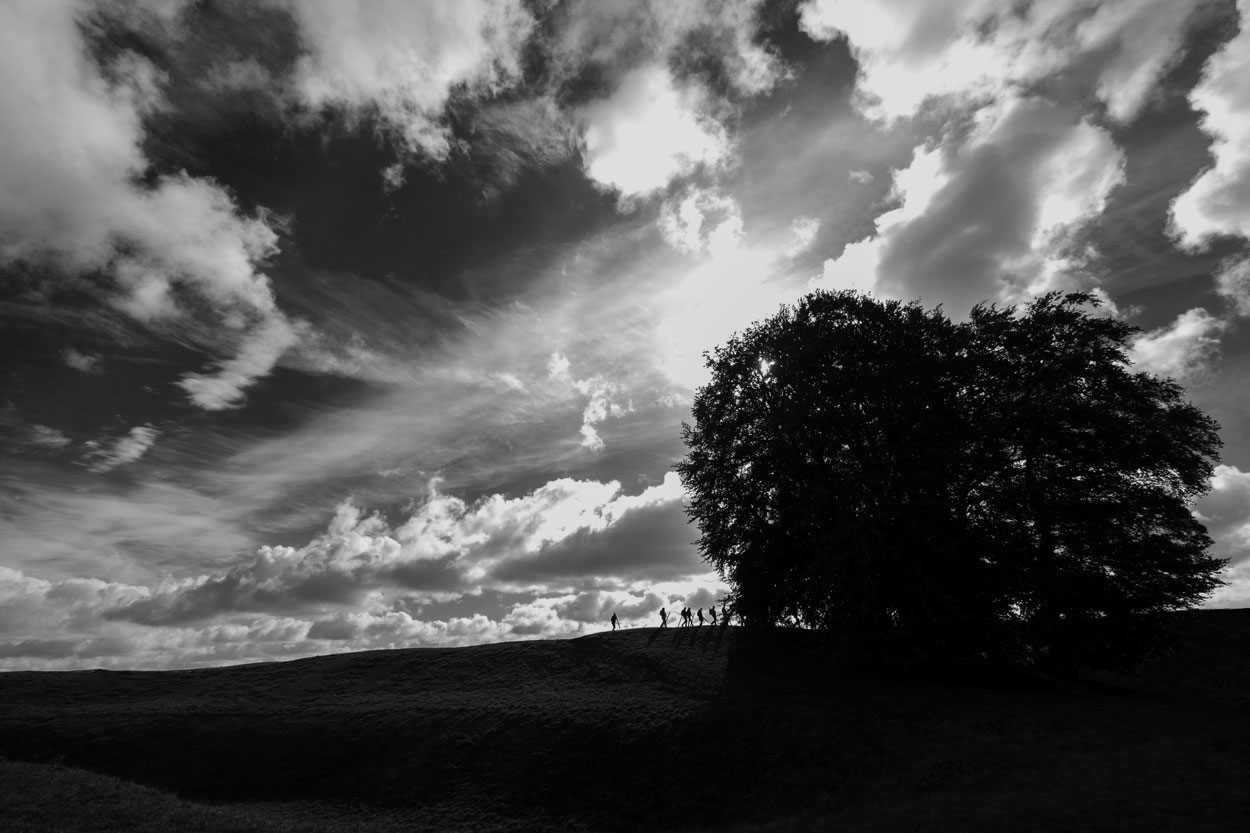ancestral geographies
the disenchantment tale includes a characterization of nature (as despiritualized and scientized), but also a cultural diagnosis (modernity as demythologized and rationalized) and a psychological profile (a self tending toward disillusionment, skepticism, cynicism, or nihilism). there are more or less subtle, more or less convincing, versions of this tale, all of which posit some kind of lack or loss in the late modern condition.
(jane bennett, de rerum natura – strategies journal of theory culture & politics, vol. 13, no. 1, may 2000)

the presence of stone #3 (dartmoor, devon - wall. photographic montage, graphite pencils and inks on paper, 2024)

the presence of stone #1 (dartmoor, devon - tor: photographic montage, graphite pencils and inks on paper, 2024)

the presence of stone #2 (st margaret's bay, kent - chalk reef: photographic montage, graphite pencils and inks on paper, 2024)
tool materialism
at once , amongst countless other obtuse entanglements, a neolithic flint tool embodies – deep-time star furnaces, the moon’s pull on ancient oceans, the bio-mineralised spicules of marine sponges, eons of carbonate precipitation and marine detritus, creeping tectonic plate collisions, the forces of climatic erosion and the evolution of primate life.
fragment – 5.2 – discontinuities
found lost imagined
faded white markings
coarsely dressed slabs
blackened stone hearths
dull amber fragments
struck flint scrapers
incised burnished bones
dark combed sherds
pierced bone objects
thin charred horizons
star stone alignments
slow ritual landscapes
being belonging becoming

ancestral geographies #1 (silbury hill, wiltshire, 2018)

ancestral geographies #2 (summerhouse hill, kent, 2021)

ancestral geographies #5 (pilgrims, avebury, wiltshire, 2018)



